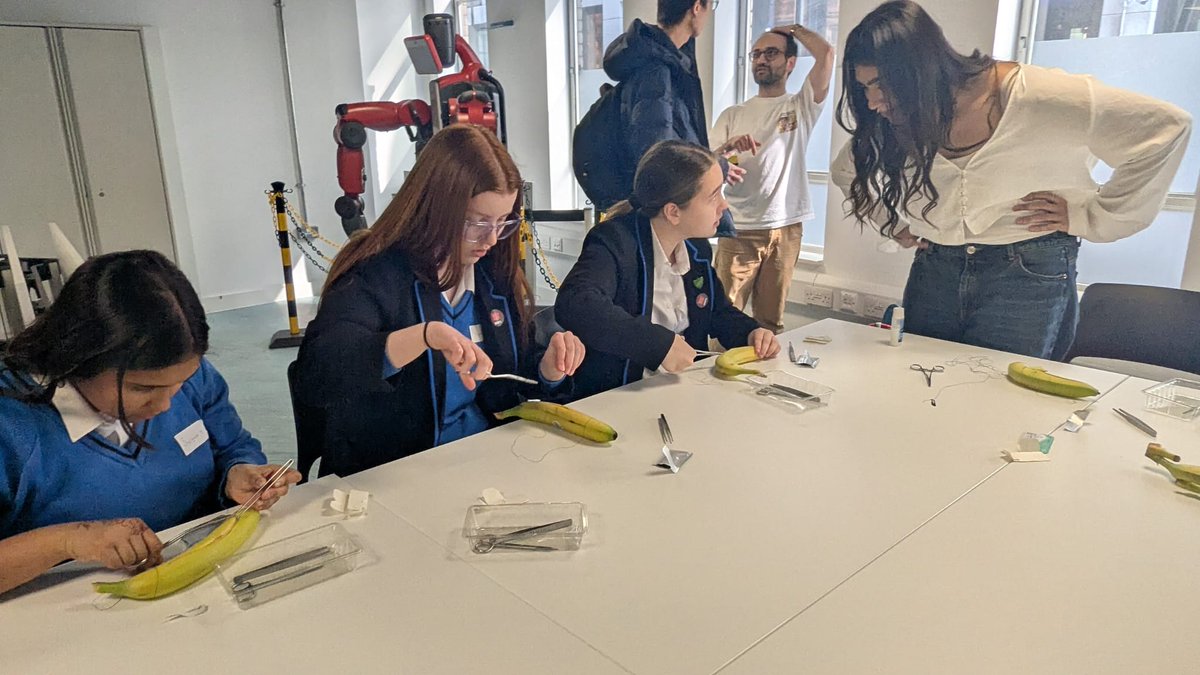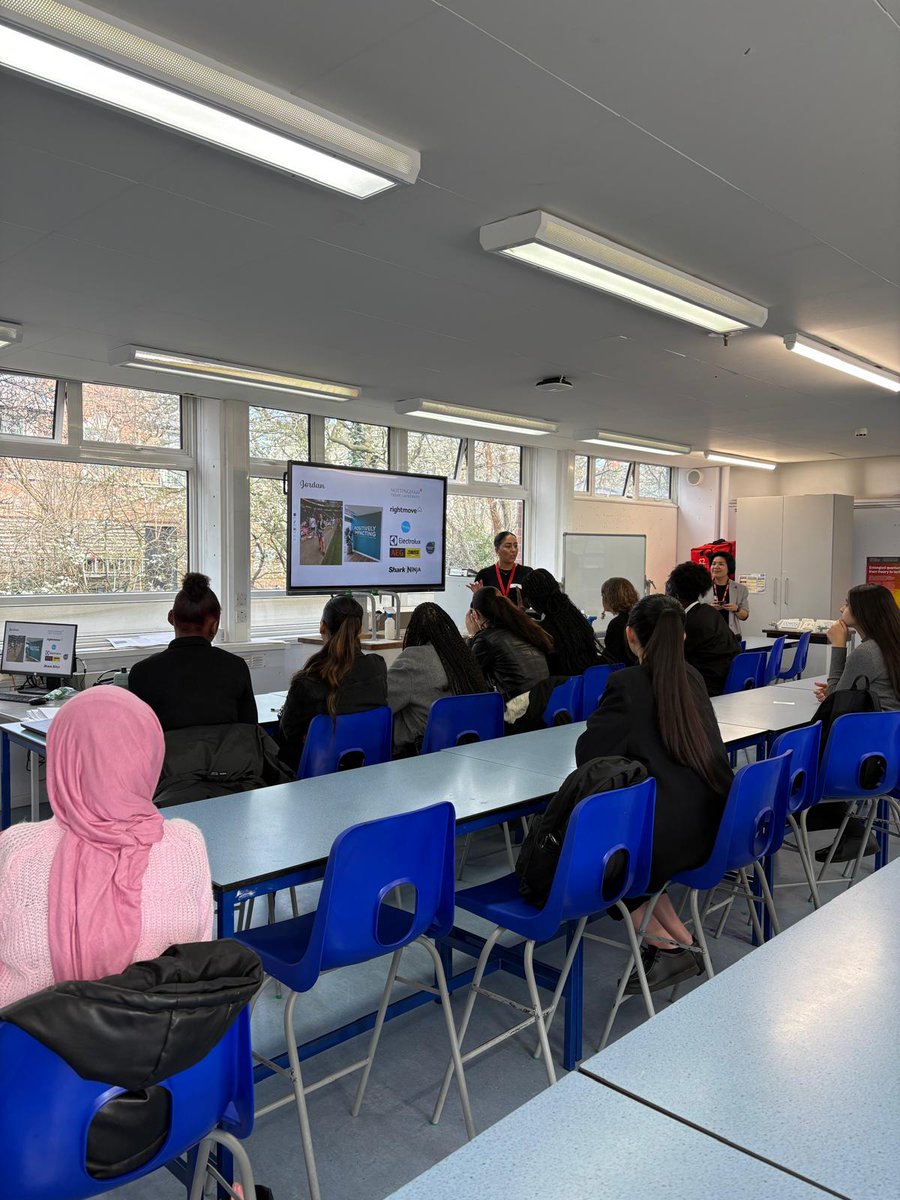Latest News
Posted on May 14th 2018
Alix Bizet is Our First Artist in Residence
 A new artist in residence programme at Harris Girls’ Academy East Dulwich is broadening the curriculum for Year 9.
A new artist in residence programme at Harris Girls’ Academy East Dulwich is broadening the curriculum for Year 9.
French designer Alix Bizet (left) now has a studio at Harris Girls’ Academy East Dulwich as part of the school’s new artist in residence programme that started in December.
Alix, who trained in product design and has previously been artist in residence at London’s Design Museum, has her studio next door to the art classroom. It’s the idea of head of art Clare Stanhope (right), who spotted the potential after an old photography darkroom became vacant.
“I’ve wanted to organise an artists in residence programme for some time,” says Clare, who had previously set up an art gallery at the school with art teacher Jose Campos where visiting artists can display their work and discuss it with students.
“I want the curriculum to be as vibrant as possible. I’m white, middle age and middle class, which is valid, but there’s lots of things I can’t bring to the classroom because that’s not who I am. But what I can do is create spaces where other people can come in – spaces that enable conversations to happen.”
Hair and the community
Alix is mixed race and studied in England and Holland as well as France. Her work explores cultural identity, reflecting the many influences on her own life.
 As part of her residency, Alix will work with students on a project exploring the role of hair in the Afro community, from which many of the students come. She’s started by asking students and teachers to collect combings from their own hair, which she has spun into a yarn (pictured) to represent the diversity of the school.
As part of her residency, Alix will work with students on a project exploring the role of hair in the Afro community, from which many of the students come. She’s started by asking students and teachers to collect combings from their own hair, which she has spun into a yarn (pictured) to represent the diversity of the school.
Students will also photograph and film hairdressers in Peckham to explore the significance of hair in Afro culture, while an embroidery workshop will also look at how the hair can be used to create new objects. The plan is to end the project with a show at the South London Gallery in November.
“For me, it’s important to look at the identity of the school and celebrate the different backgrounds of students – African, Afro Caribbean, Caucasian, Eastern European,” says Alix. “I want to celebrate the diversity of the school and for me that’s a bit unique, because if you go to other schools it’s not so celebrated.”
Alix understands that the project may be controversial. “People are sometimes disgusted by the yarn I’ve spun from hair. They don’t want to touch it or look at it. But my project is all about celebrating that hair is important in the Afro community. I know this project is going to be challenging because some people will feel it’s not so respectful.”
Inspire students
Clare thinks that having someone like Alix around the school will inspire students by letting them work with a professional artist. “There’s a brilliant feminist quote that goes ‘You can’t be it if you can’t see it’. I strongly believe you need to be promoting women artists and women of colour. We’re in a girls school, and the students need to not be surrounded by usual dead white male artists that the curriculum is infused with all the time.”
Alix is particularly interested in how we can bridge the gap between the viewing public and contemporary art. “In contemporary art, design or architecture it’s always the same people from the same kind of privileged background – often white middle class and from the same schools. The journey is not very diverse so the fact that I’m French, that I don’t do oil or sculpture, I don’t do something classic and I’m ethnically diverse – I think it can give students the idea that they can open doors they thought were closed and unreachable.”
Gentrification
Her work also ties in with the controversy over the changing face of Peckham, often referred to as ‘gentrification’. Artists are being priced out of studio space, says Alix, and the hair salons are being asked to move as well. The project will give students a chance to explore these issues too.
Alix is free to use her studio at the school on weekdays or evenings or on Saturdays. “As an artist you never realise how important it is to have a studio,” she says. The room here is three times the space I might get somewhere else in Peckham. I’ve got all my materials, my sewing machine, my mood board – it’s where I come to work and concentrate, to give me ideas.”
In return for working with students, Alix gets the space for free, and when her residency ends in December a different artist will then be invited to work at the school.
Artists in residents are not unknown in schools but they usually work in private schools and in traditional fine arts, such as painting and sculpture. If you search on the internet you’ll most likely be directed to the websites of Eton, Repton or Marlborough. In future, Clare hopes that more state schools will see the value of having working artists in the school too.






















